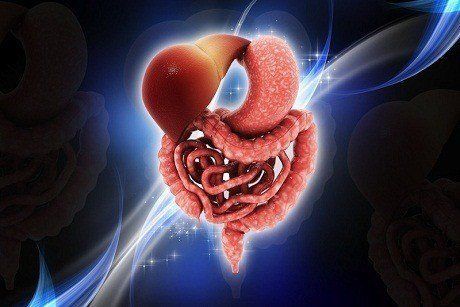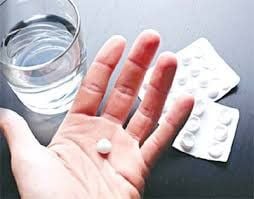This is an automatically translated article.
The article was professionally consulted by Doctor Department of Obstetrics and Gynecology - Vinmec Hai Phong International General Hospital.
Estrogen disturbances during perimenopause and menopause will greatly affect a woman's quality of life. Not only beauty is degraded, physiological decline, but women also face an increased risk of urinary tract diseases, osteoporosis, heart disease,...
1. Estrogen plays an important role in women's health and beauty
Estrogen is the common name for three hormones: Estrone (E1), Estradiol (E2) and Estriol (E3). Because Estradiol is the most active type, 12 times more than Estrone and 80 times more than Estriol, so the main effect of Estrogen is the effect of Estradiol. Estrogen is produced mainly in the ovaries, plays an important role in the health, beauty and attractiveness of a woman:
Estrogen helps develop sex and sex organs, helps women have special characteristics. Female characteristics such as enlarged breasts, slim waist, small shoulders, clear voice, create sexual needs and protect genital organs against inflammatory agents. Estrogen creates the beauty and youth of a woman thanks to the effect of retaining water, accumulating collagen and subcutaneous fat, helping women have smooth skin, long hair, and smooth black hair. Estrogen helps the lining of the uterus to grow, along with progesterone to create the menstrual cycle, create desire and maintain sexual ability. Estrogen determines conception by helping to develop follicles, stimulate ovulation, and create a favorable environment for sperm to move and fertilize. Estrogen helps cardiovascular organs work rhythmically, neutralizes free radicals, fights aging and chronic diseases such as diabetes, cardiovascular disease, dyslipidemia, cancer, ..

Recommended video:
How long does menopause last?
2. Estrogen disorders - common problems in perimenopause and menopause
Perimenopause is the period of time from the onset of the first symptoms of menopausal disorders, usually around the age of 40, and ending with the last menstrual cycle. Menopause is defined as the complete cessation of menstruation due to the natural, irreversible physiological decline of the ovaries. Menopause is diagnosed when a woman who is having regular periods each month spontaneously stops, has not had a period for 12 consecutive cycles. During perimenopause, menopause, the ovaries gradually run out of reserves, female hormone decline occurs suddenly, and serum estrogen gradually decreases. During a normal menstrual cycle, serum estradiol levels range from 50-350 pg/ml and estrone from 30-110 pg/ml. In postmenopausal women, estradiol levels drop to about 5-25 pg/ml, and estrogen levels are still from 20-70 pg/ml. The estrogen disturbance will greatly affect the health of women in pre-menopause and menopause. The characteristic dysfunctions caused by the female hormone estrogen are:

2.1 Vasomotor disorders Vasomotor disorders are characterized by hot flashes and night sweats. Hot flashes are transient and recurrent hot flashes in the face or chest that then spread throughout the body, accompanied by sweating, body heat, nervousness, palpitations, anxiety, and chills. Hot flashes usually last 1 to 5 minutes. Night sweats are hot flashes that occur at night and interfere with sleep.
2.2 Psychological changes The psychological changes caused by estrogen disorders are mainly insomnia, irritability, anxiety, depression, mood changes, decreased libido. Psychological changes manifest in different degrees depending on the psychological state of each person. Depressive disorder affects 20% of postmenopausal women.
2.3 Morphological changes of the genital organs The decrease in the female hormone estrogen during menopause will make the vaginal mucosa thin, dry, pale. The vagina becomes less elastic, narrows and shortens. Vaginitis or vaginal atrophy can occur with symptoms such as itching, burning, and chronic vaginal discharge. An estimated 45% of postmenopausal women have symptoms of vaginal atrophy. Changes in the vagina and vulva affect a woman's quality of life and sexual function.

2.4 Vulnerability to gynecological infections The acidic pH of vaginal fluid helps to fight pathogens. Estrogen stimulates vaginal epithelial cells to produce glycogen, which then forms glucose. Lactobacillus bacteria help convert glucose into lactic acid, which is responsible for maintaining the acidic pH of the vagina. Estrogen disturbances during perimenopause and menopause will lead to decreased glycogen production, increasing vaginal pH levels. High vaginal pH makes it easier for pathogens to enter, increasing the risk of gynecological infections.
2.5 Urinary Disorders Estrogen plays an important role in maintaining the epithelium of the bladder and urethra. Estrogen deficiency will change most of the anatomical, cellular, microbiological and physiological structures of the urogenital system. Postmenopausal women have urinary symptoms such as urinary frequency, urgency, dysuria, hematuria, irritation, urinary incontinence, recurrent urinary tract infections,...
2.6 Sexual impairment Disorder Estrogen disturbance in premenopausal women, menopause causes the sebaceous glands in the vagina and vulva to become less or no oil secretion, causing pain during sex. Pain during sex, along with decreased sex drive, is the main cause of decreased frequency of sexual activity.

2.7 Increased risk of osteoporosis Decrease in the female hormone estrogen has been shown to cause osteoporosis by reducing bone density. From 1.5 years before menopause to 1.5 years after menopause, bone density decreases by about 2.5% per year. Women with early menopause have an increased risk of osteoporosis compared with normal postmenopausal women. The longer the duration of menopause, the higher the risk of osteoporosis, the risk of osteoporosis in women with menopause over 10 years increased 2.9 times compared with women with menopause less than 10 years.
2.8 Increased risk of cardiovascular diseases Estrogen has a cardioprotective role by maintaining high HDL and low LDL levels. During perimenopause, when estrogen levels begin to decline, a woman's risk of cardiovascular disease also begins to increase. The lack of estrogen facilitates the formation of atherosclerotic lesions. Atherosclerotic plaques grow, leave the vessel wall, move, causing complications of arterial occlusion in the lungs and brain, causing serious complications.
Perimenopause, menopause is a natural process of aging. Women have to gradually get used to the body changes caused by female hormone disorders, especially the decrease in estrogen caused. Follow a healthy lifestyle, exercise regularly, maintain a healthy diet, reduce salt and fatty foods, eat lots of fruits and vegetables, eat lots of fish to provide omega-3 and other nutrients. beneficial fats...will help relieve uncomfortable symptoms and maintain the health of premenopausal and menopausal women. In cases where the decline in female hormones greatly affects a woman's health, the doctor may consider giving the patient hormone replacement therapy.
Recommended video:
Introduction to Vinmec Health System
Please dial HOTLINE for more information or register for an appointment HERE. Download MyVinmec app to make appointments faster and to manage your bookings easily.













